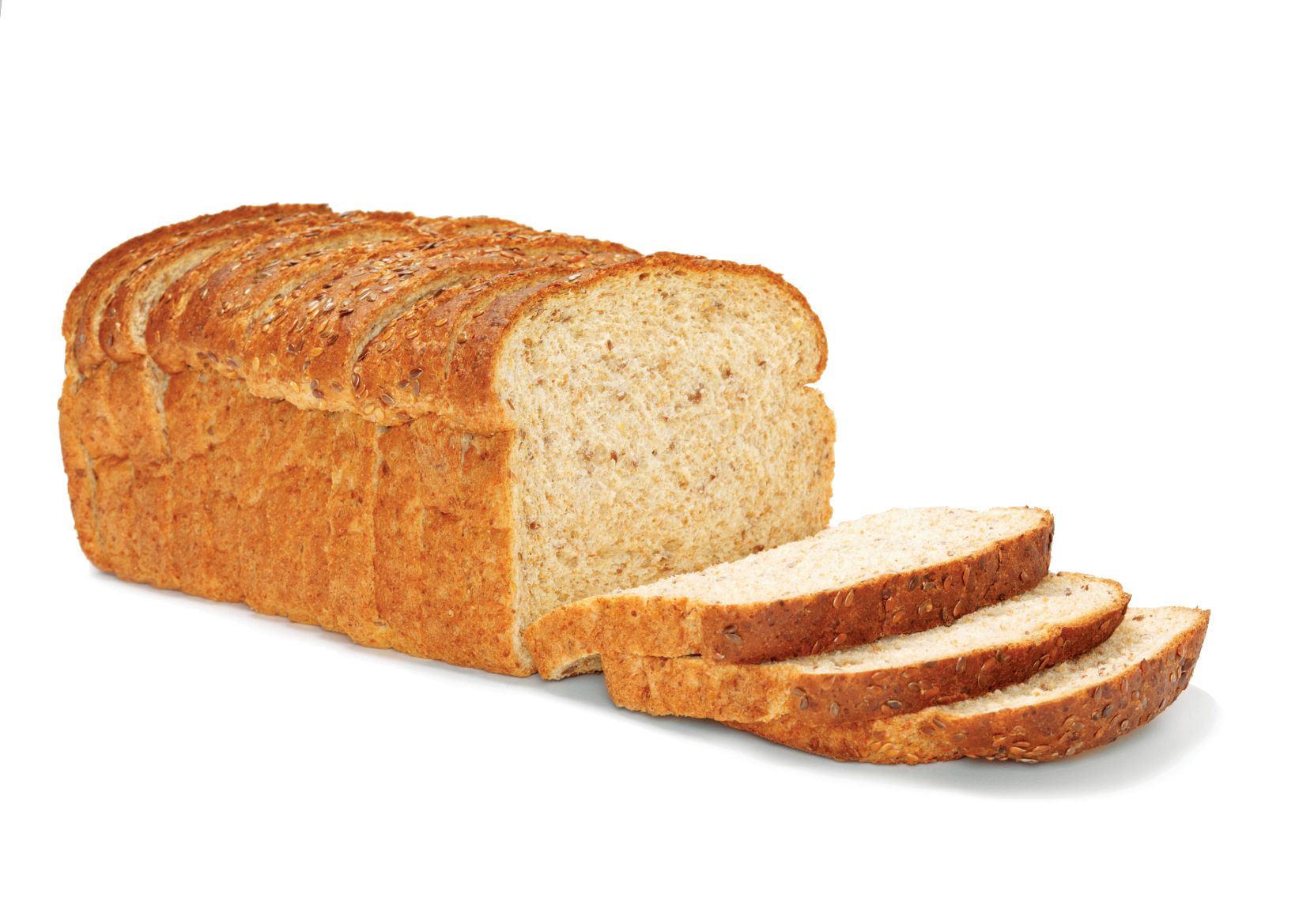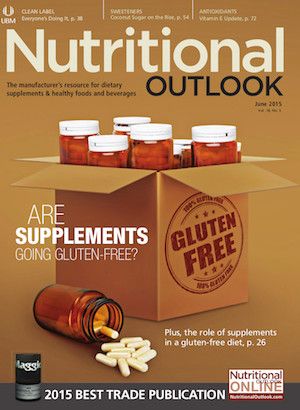Clean Label: Everyone’s Doing It
But does anyone know what "clean label" really means?

The biggest names in food are committing to clean label these days.
In February, Nestlé USA announced that it will banish artificial colors and flavors from its chocolate candies and Nesquik powdered drink mixes. Hershey soon thereafter said it aims to reformulate all its candies to contain “ingredients that are simple and easy to understand.” Then Kraft committed itself to replacing synthetic colorants in its flagship Macaroni and Cheese with colors derived from spices like paprika, annatto, and turmeric. PepsiCo got into the act by pledging to swap out aspartame, the artificial sweetener in its Diet Pepsi, with the equally artificial, but apparently more acceptable, sucralose. Even quick-service giant McDonald’s announced that it will no longer serve chicken treated with human antibiotics, while more obviously progressive foodservice brands Chipotle Mexican Grill and Panera Bread made headlines by, in the former’s case, banning genetically modified (GMO) ingredients from its menus and, in the latter’s, releasing a “No-No List” of ingredients that the chain will phase out of its kitchens by the end of 2016.
Those are starring examples of what experts predict will be the product development imperative of our age, both for mainstream and small brands alike.
As the clean-label movement creates both opportunities and challenges for suppliers and retailers, the food industry’s ability “to help influence and educate consumers will be pivotal when it comes to how clean label ultimately gets defined” and implemented, says Barb Murphy, director, marketing communications and market insights, Corbion Caravan (Lenexa, KS).
Driving the Discussion
The rise of the clean label comes as no surprise to Angelina De Castro. “We’ve seen a fundamental shift in the food industry toward simpler ingredients,” says the senior manager, marketing, Wholesome, Ingredion Inc. (Westchester, IL). “This is no longer only relevant for natural or organic brands, but includes major consumer brands.”
Michael Swenson, director of business development, Sensient Natural Ingredients (Turlock, CA), agrees, noting that the clean-label question “is now a part of every customer-supplier dialogue.” He traces the public’s awakening to journalists like Michael Pollan, whose books The Omnivore’s Dilemma, In Defense of Food, and Food Rules give readers simple strategies for eating wisely, such as “If you can’t say it, don’t eat it” and “No more than five ingredients per label.” But Pollan’s voice isn’t alone. “There are many other individuals, food manufacturers, and retail chains that participate in the discussions,” Swenson notes.
Thanks to social media, “a single consumer advocate or blogger can have tremendous influence on consumers, suppliers, and manufacturers,” Murphy says. (We’re lookin’ at you, Food Babe.) “While the information isn’t always accurate,” Murphy notes, “it does reach a wide audience and has proven to be a source of leverage to promote change-good or bad.”
What Clean Means
No change would get off the ground, however, were shoppers not hungry for it in the first place. Which is why De Castro believes that clean labeling “is strongly driven by consumers, who are paying more attention to ingredient lists and dietary habits.” The challenge for manufacturers, retailers, and consumers, she says, “will be in determining what defines a product as ‘clean label.’”
That’s a question weighing on the minds of everyone-except, it appears, regulators at FDA, the USDA, and local agriculture departments, who, as far as Thom King, CEO and president, Steviva Ingredients (Portland, OR), can tell, “haven’t guided us on any definition of clean label.” Rather, he observes, “The actual definition of clean label is a bit of an enigma, not unlike ‘natural.’”
That leaves manufacturers casting about for some sort of lodestar to direct their reformulations. Not infrequently, the one they follow “is associated with short ingredient lists and minimally processed ingredients that might be found in an average kitchen cupboard,” says Nicole Rees, business development manager, Glanbia Nutritionals Ingredient Technologies (Fitchburg, WI).
A consequence has been that clean labels often resemble liberated ones, trumpeting their “freedom” from whatever ingredients their audience rejects. Indeed, says De Castro, “‘Free from’ is one of the most common clean-label front-of-pack claims.” She cites the 2013 Natural Study by Health Focus International as finding that the majority of shoppers link “natural” to what’s left out of a product, “explaining why ‘free from’ claims strongly resonate with consumers,” she says.
GMO-free serves as a “purity” attribute that also signals a label’s cleanliness, with GMO-free new-product launches in 2014 tripling their 2012 level, per the Mintel Global New Products Database, De Castro points out. Clean can signal transparency and sustainability, too, which are major selling points for Millennials and younger teenagers, Rees says. “These generations ask what manufacturers mean by ‘pasture raised,’ ‘humane,’ ‘cage free,’ and ‘grass fed,’ and they want to understand the implications behind their choices,” she notes. In that spirit, Swenson adds, suppliers like his company base their standard not just on being clean label, but on being clean conscience. He says, “Our labels and documentation show that our products are free of chemicals, clear on the origin, clear on all the tests done and the results obtained and even on the test methods used.”
Nevertheless, industry is still trying to pin the tail on the clean-label donkey. And until we do, De Castro points to an interim definition that her company developed in 2010, using consumer insights and regulatory and labeling definitions as guidance. Its key points are freedom from chemical additives or ingredients with “chemical-sounding” names; production regimes comprising traditional techniques or minimal processing entirely; and simple ingredient lists that consumers can understand.
On the Outs
“The bottom line,” De Castro concludes, “is that mainstream consumers are moving away from processed or ‘artificial’ foods.” Even so, processors have to continue producing foods and beverages that aren’t just clean label, but are safe, operationally tolerant, consistent, affordable, long-lasting, and-the clincher-tasty.
To square that circle, developers are increasingly comparing their ingredient inventories with their consumers’ wish lists and deciding which items on the former to toss. The targets may “vary by category and product positioning,” De Castro says, but consumers reliably forgo artificial flavors, sweeteners, additives, “chemicals,” and preservatives in favor of “natural or unprocessed ingredients.”
Checking all the safety, consistency, and sensory boxes while sticking to a clean-ingredient toolkit is “one of the biggest challenges” in formulation today, De Castro says. “The ingredients used in clean-label formulation need to be robust, delivering functionality equivalent to conventional ingredients.”
Take titanium dioxide, a whitener found in icings, cheeses, confections, supplements-and on Panera’s recently released “No-No List.” (Experts have classified titanium dioxide’s dust as “possibly carcinogenic to humans.”) Manufacturers need a replacement with both a better reputation and functional utility. Marc Etienne Denis, commercial managing director, specialty rice ingredients, Beneo (Oreye, Belgium), points manufacturers to his company’s non-GMO waxy rice starch. In addition to being gluten free, hypoallergenic, and neutral tasting, the waxy rice starch has proven both “extremely stable” in test trials and capable of “preserving the brilliant white color of the end product for months,” he says.
With a fine particle size ranging from 2–8 µm, it fills micro pores on product surfaces, “allowing for the creation of perfectly smooth coatings,” he adds. Its neutral taste and small starch granules that mimic the sensation of fat globules on the palate also enhance creaminess in dairy and impart a glossy appearance. And the starch helps protect against syneresis, Denis says, “ensuring stability during product shelf life.”
Better Baking
Another category where titanium dioxide makes an appearance is bakery, the entirety of which is undergoing some serious clean-label reevaluations. Top candidates for elimination include synthetic dyes and the partially hydrogenated oils that contribute trans fats, as well as plenty of functional aids that, though indispensable in doughs and batters, are roundly unwelcome on labels. With names like potassium bromate, azodicarbonamide (ADA), calcium peroxide, potassium iodate, L-cysteine, and SSL (sodium stearoyl-2-lactylate), CSL (calcium stearoyl-2-lactylate), and DATEM (diacetyl tartaric acid ester of mono- and diglycerides), it’s easy to see why. But chemophobia aside, such ingredients make commercial baking possible.
For example, potassium bromate, calcium peroxide, potassium iodate, and ADA-the last much in the news as the “yoga mat” ingredient previously in Subway sandwich bread-are all oxidizing agents that strengthen dough and increase its tolerance to processing and natural variations in flour quality. L-cysteine is a reducing agent that not only makes dough more extensible-preventing “snap back” in pizza crusts, for instance-but shortens mix times, too. As for SSL, CSL, and DATEM, they’re all emulsifiers that strengthen dough, improve its machinability, and make the finished bread softer.
Murphy says that Corbion Caravan has developed enzyme technologies to help bakers replace these additives without losing valuable functionality. And while the technologies represent a step forward, she concedes that fully scrubbing all bakery formulations of “chemicals” without sacrificing functionality remains a work in progress. “While the solutions we have now can reduce the use of strengthening emulsifiers and replace ‘chemicals,’” she says, “they’re not able to replace strengthening emulsifiers completely in some whole-grain bread applications. We’re still working to make them even more effective and close the gap between our current clean-label solutions and strengthening emulsifiers.”
In the meantime, baking operations might want to investigate the milled flax ingredients that Glanbia Nutritionals offers as “natural” alternatives to emulsifiers, modified starches, and gums. The ingredients “not only provide freeze/thaw stability in frozen doughs, batters, and fully baked products,” Rees says, “but manage moisture and mimic the softness and functionality of mono- and diglycerides and other emulsifiers used for texture.”
Clean Sweetening
There’s been a mad dash in bakery to clean up sweetener options, too, with high-fructose corn syrup (HFCS) a key sugar that manufacturers hope to remove. Formulators are cutting sugar contents across the board in an attempt to reduce calories, and though that’s traditionally meant reformulating with high-intensity non-nutritive sweeteners, consumer resistance to these “artificial” options is mounting.
“Sugar has the biggest negative dietary impact of all ingredients,” Steviva’s King points out. “Approximately 13% of adults’ total caloric intake comes from added sugars. Thus, more and more food scientists are coming to us inquiring how they can achieve clean-label sugar reduction.” The alternatives that his company offers to sweeteners like sucralose, acesulfame potassium, and aspartame include monk fruit extracts, polyols, inulin, non-GMO crystalline fructose and, the big attention-getter these days, stevia.
But despite being a “natural” high-intensity sweetener, stevia has its drawbacks. “The key challenge in replacing sugar with high-intensity sweeteners has been to deliver a sweetness profile similar to sucrose,” says Kasi Sundaresan, PhD, senior associate, global sweetener development at Ingredion. For example, a 7%-12% sucrose equivalent would be the target in, say, a beverage formulation, she says, “but some of the challenges of working with stevia are that it has a bitter aftertaste and lingering sweetness that becomes more apparent above 6% sugar equivalence.”
To get around this roadblock, especially in beverages, she advises aiming for sugar reduction over replacement, which allows formulators to use nutritive sweeteners like sucrose, fructose, or dextrose in conjunction with stevia. If a zero-calorie beverage is a must, “Formulators can add erythritol at a max level of 3.5% to get a 2.4% sweetness equivalent along with stevia to reach the 7%-12% sweetness-equivalent target,” she explains. And as a bonus, erythritol provides bulk and “rounds out” the taste, altering sweetness onset and reducing off notes.
Another stevia companion that boosts sweetness and supplies bulk is monk fruit, Sundaresan continues, adding that blending acids like citric, lactic, tartaric, and malic can balance a stevia-sweetened beverage flavor. “And certain flavors and sweetness enhancers are often used along with stevia for masking off notes and boosting sweetness intensity to give a more sugar-like experience,” she says.
Complex Brew
But cleaning up beverages involves swapping out more than just artificial sweeteners. Consider ingredients like brominated vegetable oil (BVO), ester gum, and sucrose acetoisobutyrate (SAIB), all weighting agents that stabilize oil-in-water emulsions, like those that occur in beverages flavored or colored with oil-soluble ingredients. Weighting agents are especially useful “when the emulsifier, like modified starch or gum arabic, doesn’t adequately provide the stabilization the beverage needs,” says Dinah Diaz, senior marketing manager, delivery systems, Ingredion. “So with the trend toward delivering natural colors, the use of natural emulsifiers is becoming ever more important.”
Her company produces a clean-label emulsifier-tapping the sustainably grown Chilean Quillaja saponaria tree as its source-that not only eliminates the need for BVO, SAIB, or ester gum, but has a low-enough viscosity to permit the creation of high-load oil emulsions, Diaz says. “Another area where we offer cleaner-label solutions is with foaming stabilizing agents such as propylene glycol alginates, or PGA, which have traditionally been used in beverages,” she continues. They source the line of natural foaming agents from two plants: again, the quillaja tree and Yucca schidigera.
Glanbia’s Rees adds that fortification makes it that much harder to keep functional labels clean-especially on beverages-as some nutrients, like hydrophobic amino acids, require emulsifiers and stabilizers to promote dispersion. “To overcome this, our sports-nutrition scientists have developed a patent-pending process that uses multifunctional ingredients, such as dairy proteins, to deliver these hydrophobic amino acids in soluble form,” she says. The ingredient system “binds specific amino acids-leucine, for example-to whey peptides for improved utilization, a palatable mouthfeel, and a clean label.”
All of this is good news for consumers and product developers alike looking to join the clean-label crowd. For, Rees says, “As the market continues to demand shorter ingredient lists and recognizable, kitchen-cupboard-style ingredients, products that combine great taste and convenience with clean-label appeal are set for success.”
Also read:
Clean-Label Options for Gums and Hydrocolloids
Photo credit: Some clean-label ingredient solutions are still a work in progress, such as replacing strengthening emulsifiers completely in whole-grain bread. Photo © iStockphoto.com/Lauri Patterson

Prinova acquires Aplinova to further increase its footprint in Latin America
April 7th 2025Prinova has recently announced the acquisition of Brazilian ingredients distributor Aplinova, which is a provider of specialty ingredients for a range of market segments that include food, beverage, supplements, and personal care.
























